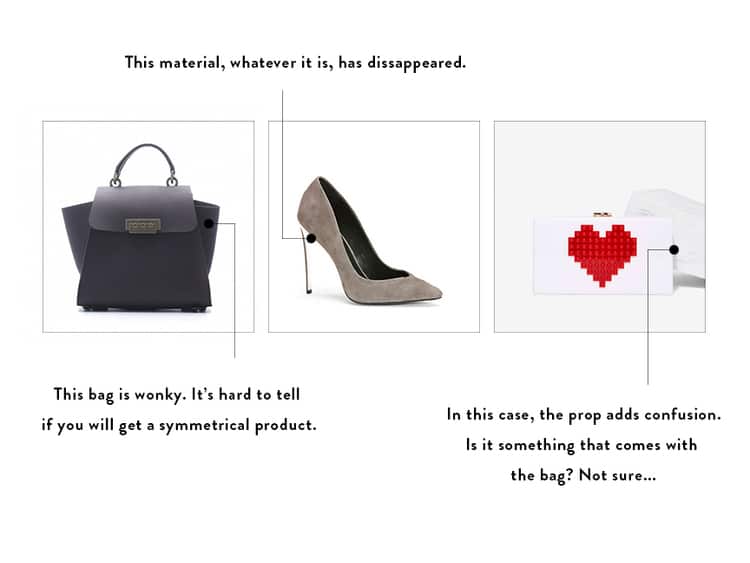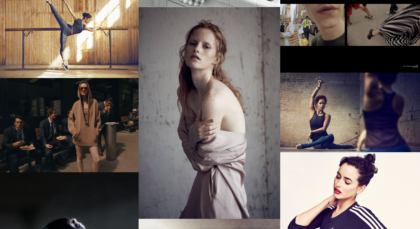A customer making a decision to buy your product online depends almost entirely on the product photography. So how do you make sure your images are helping – not hurting – your chances of success?
Many brands have trouble judging whether or not they have strong images. We want to help brands develop a discerning eye, and here’s how to do it.
Look for these 4 key elements to determine if you have an effective image, or are in need of some improvements:
Clarity, Color, Contrast, And Consistency.
These are critical components of a strong photo. Strong photos are critical because they can increase conversion, decrease returns, and affect brand perception.
CLARITY
Does the product look true to form?
If the customer makes a purchase, will they be surprised by what they see when the package arrives? In these examples, there is something off in each image that doesn’t allow the customer to fully understand how the product will look in real life. Understanding materials, textures, and special features is important to help the customer make a decision. Making those details clear can also lead to more sales – that colorful silk lining, or special stitching on a seam, or functional extra strap, might tip the scale and increase their desire to hit the buy button.

COLOR
Is the color accurate?
Seems easy, but as you can see, sometimes colors shift when photographed. Bright, saturated tones and fluorescents usually alter when photographed, and need to be adjusted in post-production. Also, if you are using a background color, make sure it’s not reflecting onto the product, skewing the true color.

CONTRAST
Are there sufficient lights and darks to add depth?
In e-commerce product photography, much of the valuable detail gets lost once the image gets uploaded to your site and ultimately viewed on someone’s monitor. Because of this, we always recommend “turning up the volume.” Pushing the contrast on an image will help give it the definition it needs to pop off the page.
Lights, darks, metals, and suede are just a few examples of some particularly tricky things to photograph. Suede, for instance, absorbs lots of light, while white can often reflect, losing important shape once uploaded.

Read More: 5 Ways M.M.LaFleur Upped Its E-Commerce Imagery Game
CONSISTENCY
Are similar products treated consistently? Are sale pages looking cohesive and clean?
If you are styling two or more of the same products, be sure to keep the styling consistent, especially when talking about accessories like handbags and shoes. You want to give the customer a clear idea of how this product will look, so switching it up from piece to piece can cause confusion.
On-figure shots can sometimes benefit from the opposite approach. You may choose to show variety in the way a cardigan is styled, for instance, to help the customer visualize it closed or open, belted or loose, without having the take the extra click to the product detail page.
Sale pages are another area where we often see brands appear a little messy. Make sure crops and aspect ratios remain consistent so that a customer can browse your product selection without distraction.
Alternatively, if you like a less consistent approach, this can also work very well – just be sure to plan it in advance of the shoot so that each image and crop is carefully considered.

Having product photography that hits these 4 things perfectly will help your brand, and your business, succeed.
If you have any questions or thoughts, please reach out to us. We would be more than happy to discuss the article as relates to you and your product photography.
Email us at hello@thelinestudios.nyc.





